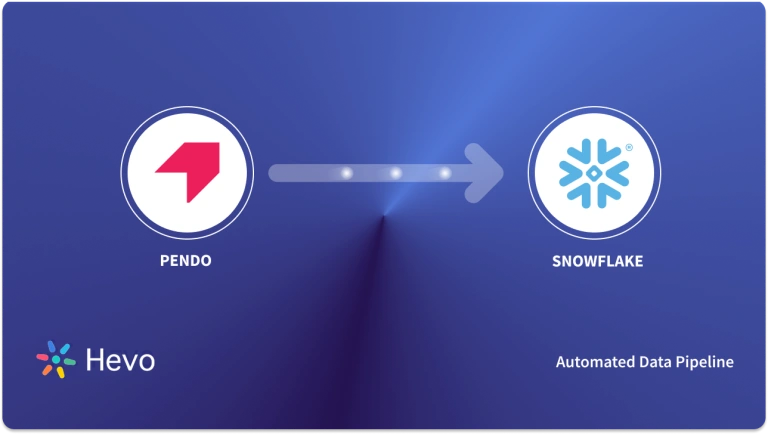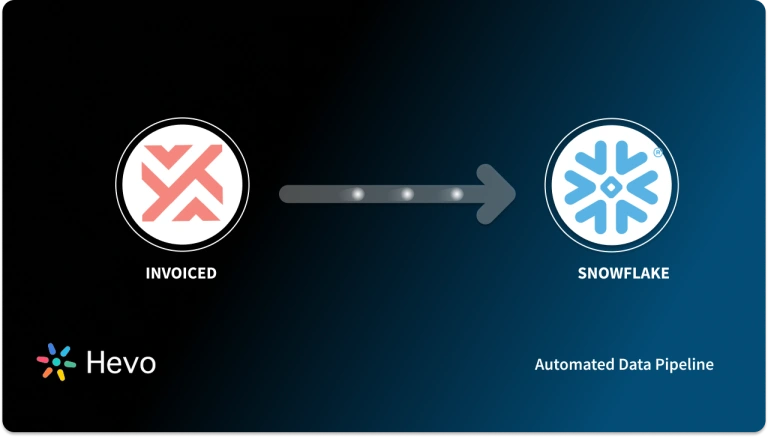The Salesforce Software as a Service (SaaS) Marketing Automation Platform Pardot serves as the central hub for managing your email automation, targeted email campaign, and lead management projects. Tracking customer behavior and developing digital marketing campaigns are just two of the routine marketing tasks that Pardot automates.
Snowflake’s Data Cloud is built on a cutting-edge data platform that is delivered as Software-as-a-Service (SaaS). Snowflake provides Data Storage, Processing, and Analytic Solutions that are faster, easier to use, and more flexible than traditional options.
This article discusses the different methods for Pardot to Snowflake integration. In addition to that, it gives a brief introduction to Pardot and Snowflake.
Looking to integrate Pardot with Snowflake? Here are two hassle-free methods:
Method 1: Use Hevo’s No-Code Platform
Easily connect Pardot to Snowflake using Hevo’s fully managed data pipeline. With no code required, Hevo automatically syncs your Pardot data in real time and loads it directly into Snowflake.
Method 2: Custom API Integration
Leverage Pardot’s REST API to pull data and load it into Snowflake. Users will have to write custom codes to enable Pardot Snowflake migration. This method is suitable for users with a technical background.
Table of Contents
What is Pardot?
Pardot is a B2B marketing automation tool that provides Salesforce. It helps both marketing and sales teams coordinate online campaigns to increase sales and efficiency. It identifies who may eventually become customers based on the behaviors and interactions with your tool, so you can have personalized engagements. The integration with Salesforce CRM will mean shared data that’s effective up to the point where it reflects any changes made in Salesforce within 10 minutes. Pardot features include lead management, email automation, and ROI tracking. The Pardot Lightning application provides a seamless marketing and sales collaboration hub.
What is Snowflake?
It is a fully managed, single solution with SaaS for data warehousing, data lakes, data engineering, data science, and real-time data sharing. And with core functions like decoupling storage and compute, scalable computation, data cloning, and third-party tool support, this is different from any other majority of the traditional databases or any Hadoop-based platform. This uses a new-generation SQL engine and cloud architecture. It combines shared-disk and shared-nothing architectures in which a central repository of data is centrally kept for fast and efficient processing of data by MPP (massively parallel processing) clusters.
Benefits of Connecting Pardot to Snowflake
Some benefits of connecting Pardot to Snowflake are:
- Creating Leads: To bring in a steady flow of prospective customers, using this integrated marketing tools such as lead capture forms, form handlers, and landing pages.
- Email Promotion: Personalize, schedule, and send emails to your prospects as the credentials will be stored in the warehouse.
- Prospect Classification: Segment your prospects using lead grading and lead scoring.
- Prospect Administration: Discover who is most engaged with your content and connect with them on a more personal level.
- Alignment of Marketing and Sales: Connect with Salesforce CRM to improve the sales funnel, maximize future marketing efforts, and calculate marketing ROI.
Method 1: Using Hevo to Set Up Pardot to Snowflake
Step 1: Configure Pardot as the Source in Pipeline.
Choose Pardot as Source.

Step 2: Configure Snowflake as a destination.
Choose Snowflake as destination.
Reasons to try Hevo:
- Smooth Schema Management: Hevo takes away the tedious task of schema management & automatically detects the schema of incoming data and maps it to your schema in the desired Data Warehouse.
- Exceptional Data Transformations: Best-in-class & Native Support for Complex Data Transformation at fingertips. Code & No-code Flexibility is designed for everyone.
- Quick Setup: Hevo with its automated features, can be set up in minimal time. Moreover, with its simple and interactive UI, it is extremely easy for new customers to work on and perform operations.
- Built To Scale: As the number of sources and the volume of your data grows, Hevo scales horizontally, handling millions of records per minute with very little latency.
- Live Support: The Hevo team is available round the clock to extend exceptional support to its customers through chat, email, and support calls.
Method 2: Using Custom Code to Move Data from Pardot to Snowflake
Step 1: Access Your Data On Salesforce Pardot
- Accessing your data and beginning data extraction is the first step in loading your Pardot data to any kind of data warehouse solution.
- Salesforce was a pioneer in the SaaS and API economies, and as one would anticipate from a Salesforce product, Pardot can be accessed via a web REST API. The REST API acts as a Pardot to Snowflake connector.
- It is simple to access data from Pardot using the API; you simply send GET requests to the appropriate API endpoints, and the API will respond with the requested information.
- The 22 resources that make up the API represent all of the things that can be done using the platform’s marketing automation features.
- When working with an API like the one provided by Pardot, you should keep the following in mind:
- Rate Limits: Each API has some rate restrictions that you must adhere to. Particularly when working with APIs from SalesForce, where the API calls are shared by users of the core product and integrations.
- Authentication: OAuth is used for Pardot authentication, which adds some extra work to the development of any application that tries to extract data from Pardot.
- Paging and Dealing with a Big Amount of Data: As they track how people interact with your brand, platforms like Pardot produce a lot of data. It might be challenging to extract large amounts of data from an API, especially if you take into account and adhere to any rate limitations the API may have.
Step 2: Transform And Prepare Data
- You must transform your data based on two main factors after you have accessed it in Pardot:
- The restrictions of the database that will be used to store the data
- The kind of analysis you intend to conduct
- There are specific restrictions on the supported data types and data structures for each system. You can send nested data like JSON directly to Snowflake, for instance, if you want to push data into it. However, this is not an option when working with tabular data stores like PostgreSQL. Instead, before loading your data into the database, you will need to flatten it out.
- Additionally, you must pick the appropriate data types. You will once again need to make the appropriate decisions based on the system to which you will send the data and the data types that the API exposes to you. These decisions are crucial because they may restrict the expressiveness of your queries and the tasks that your analysts can perform directly from the database.
- In Snowflake, data is arranged in tables with clearly defined columns, each of which contains a particular type of data.
- A wide range of data types is supported by Snowflake. It’s important to note that various semi-structured data types are also supported.
- It is possible to load data in JSON, Avro, ORC, Parquet, or XML format directly into Snowflake. Similar to Google BigQuery, hierarchical data is treated as a first-class citizen.
- There is one notable popular data type that Snowflake does not support. The data type LOB, or large object, is not supported. Use a BINARY or VARCHAR type in its place. These types, however, are not very useful in use cases involving data warehouses.
- Creating a schema where you will map each API endpoint to a table is a typical approach for loading data from Pardot to Snowflake.
- You should ensure the proper conversion to a Snowflake data type and map each key within the Pardot API endpoint response to a column of that table.
- Naturally, you must make sure that your database tables are updated as necessary to accommodate potential changes in the data types provided by the Pardot API. Automatic data type casting is not a thing.
- You can proceed and begin loading your data into the database once you have a comprehensive and clearly defined data model or schema for Snowflake.
Step 3: Export Data From Pardot To Snowflake
- The COPY INTO command is typically used to bulk load data from Pardot to Snowflake. The data is stored in files that are typically in JSON format and are kept on a local file system or in Amazon S3 buckets. Data is then copied into the data warehouse by using the Snowflake instance’s COPY INTO command.
- Before using the COPY command, the files can be pushed into Snowflake using the PUT command into a staging environment.
- Another option is to directly upload the data to a platform like Amazon S3, from which Snowflake can access it.
Step 4: Updating Your Pardot Data On Snowflake
- You will need to update your older data on Snowflake because you will be producing more data on Pardot. Both new records and updates to older records that have been updated on Pardot for any reason are included in this.
- Repeat the previous steps while updating your currently available data if necessary. You will need to periodically check Pardot for new data. UPDATE statements are used to update an already existing row on a Snowflake table.
- The detection and elimination of any duplicate records from your database is a further concern that needs your attention. Duplicate records may be added to your database due to Pardot’s lack of a mechanism to recognize new and updated records or because of errors in your data pipelines.
- Generally speaking, ensuring the accuracy of the data inserted into your database is a significant and challenging issue.
Read More About: How to Sync Data From Snowflake to Pardot
Conclusion
This article describes the ways to Connect Pardot to Snowflake in a few easy steps. It also gives an overview of Snowflake and Pardot.
Hevo offers a No-code Data Pipeline that can automate your data transfer process, hence allowing you to focus on other aspects of your business like Analytics, Marketing, Customer Management, etc.
This platform allows you to transfer data from 150+ sources (including 60+ Free Sources) such as Pardot and Cloud-based Data Warehouses like Snowflake, Google BigQuery, etc. It will provide you with a hassle-free experience and make your work life much easier.
Want to take Hevo for a spin? Try 14-day free trial and experience the feature-rich Hevo suite firsthand. You can also have a look at the unbeatable pricing that will help you choose the right plan for your business needs.
FAQs
1. How to import JSON data into Snowflake?
To import JSON data into Snowflake, load the data into a Snowflake table using the COPY INTO command from a staged file in an external location like Amazon S3 or an internal Snowflake stage, specifying the JSON file format.
2. How do I import data from CSV to Snowflake?
You can import CSV data into Snowflake by staging the CSV file in an external (like S3) or internal Snowflake stage and then using the COPY INTO command to load the data into the desired Snowflake table.
3. How to move XML data to Snowflake?
To move XML data to Snowflake, stage the XML file in an external location like S3 or an internal Snowflake stage, and use the COPY INTO command, specifying the XML file format options. You can parse the XML using XML_PARSING functions.










